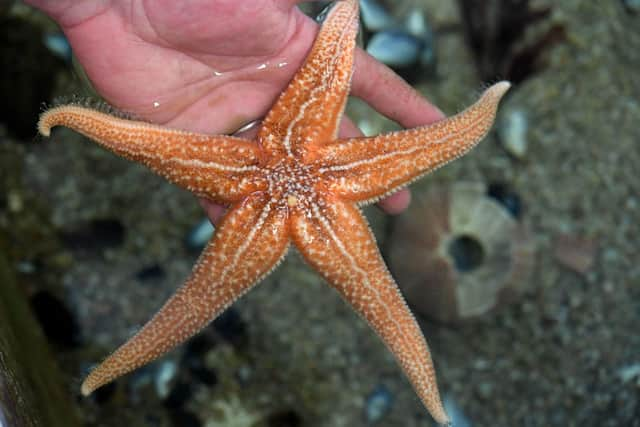Starfish: new research suggests sea creature's bodies might actually be one big head
and live on Freeview channel 276
Scientists now believe the entire body of a starfish may actually more closely resemble a head - and it could help solve the mystery of how they evolved their unusual five-pointed figures.
A new study undertaken in part by University of Southampton researchers, published in top science journal Nature on Wednesday (1 November), says that echinoderms - a group of animals including sea stars, sea urchins, and sand dollars - have a unique "five-fold" symmetrical body plan, which means that their body parts are arranged in five equal sections. But their ancestors were bilateral, meaning they had a left and right-hand side which mirrored one another, like humans.
Advertisement
Hide AdAdvertisement
Hide AdCo-author Dr Jeff Thompson told SWNS: “How the different body parts of the echinoderms relate to those we see in other animal groups has been a mystery to scientists for as long as we’ve been studying them.


“In their bilateral relatives, the body is divided into a head, trunk, and tail," he continued. "But just looking at a starfish, it's impossible to see how these sections relate to the bodies of bilateral animals.”
In the new study, researchers compared the molecular markers of a starfish to other deuterostomes - a wider animal group including echinoderms and some bilateral animals. The research team said they shared a common ancestor, so by comparing their development, they could learn more about how echinoderms evolved their unique bodies.
The team at Southampton used state of the art micro-CT scanning to understand the shape and structure of the animal in unprecedented detail. Then, their colleagues at US-based Stanford University created a three-dimensional map of gene expression in the starfish and find out where specific genes are being expressed during development.
Advertisement
Hide AdAdvertisement
Hide AdThey found a distinct set of genes in the nervous system and skin of the bilateral animals' trunks - but in starfish, many of those genes were not present in the skin and nerves at all. “When we compared the expression of genes in a starfish to other groups of animals, like vertebrates, it appeared that a crucial part of the body plan was missing," Dr Thompson said.
"The genes that are typically involved in the patterning of the trunk of the animal weren’t expressed in the ectoderm... It seems the whole echinoderm body plan is roughly equivalent to the head in other groups of animals.”
This suggests that starfish and other echinoderms may have evolved their five-section body plan by losing the trunk region altogether, he added. This would have allowed them to move and feed differently than bilaterally symmetrical animals.
But Dr Thompson said there was still much to learn about the intriguing creatures. "As someone who has studied them for the last 10 years, these findings have radically changed how I think about this group of animals.”
Comment Guidelines
National World encourages reader discussion on our stories. User feedback, insights and back-and-forth exchanges add a rich layer of context to reporting. Please review our Community Guidelines before commenting.
